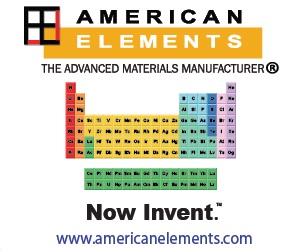
April 22 - 26, 2024
Seattle, Washington
May 7 - 9, 2024 (Virtual)
Symposium Supporters
2024 MRS Spring Meeting & Exhibit
EL05.11.04
References
[1] Xu X, Zhang Z, Qiu L, et al. Ultrafast growth of single-crystal graphene assisted by a continuous oxygen supply. Nat Nanotechnol 2016;11:930–5.
[2] E. Dhaouadi, W. Alimi, M. Konstantakopoulou, I. Hinkov, M. Abderrabba, S. Farhat, Graphene synthesis by electromagnetic induction heating of oxygen-rich copper foils, Diamond and Related Materials, Volume 132, 2023, 109659,
Inductive Heating a Versatile Process for Large Scale Single-Crystal Cu(111) and Graphene Synthesis : Experiments and Thermochemical Modeling
When and Where
Apr 25, 2024
3:15pm - 3:30pm
3:15pm - 3:30pm
Room 344, Level 3, Summit
Presenter(s)
Co-Author(s)
Samir Farhat1,2,Wafa Alimi1,2,Ivaylo Hinkov1,2,Mourad Cherif1,2
Université Sorbonne Paris Nord1,Laboratoire des Sciences des Procédés et des Matériaux LSPM CNRS2
Abstract
Samir Farhat1,2,Wafa Alimi1,2,Ivaylo Hinkov1,2,Mourad Cherif1,2
Université Sorbonne Paris Nord1,Laboratoire des Sciences des Procédés et des Matériaux LSPM CNRS2
Inductive heating (IH) is proposed as a new concept to bring together centimeter-scale single crystal Cu(111) metal catalyst preparation and graphene growth in a combined process. Commercial polycrystalline metal catalyst is first heated by radio frequency (RF) magnetic fields. A nearly uniform magnetic field induced by Helmholtz-like coils penetrates the copper foil generating eddy currents. While the frequency of the current is being rapidly varied, the substrate temperature increases from room temperature to ~1030 °C in ~1 minute. Unlike Roll to Roll (R2R) methods where the copper is continuously passed in a hot furnace region [1], in our approach, the induction coils are moved at a constant speed generating a controlled thermal gradient. The rate of heating and cooling of the metal are hence much faster and gradient surface energy is better modulated. In addition, machine performance and maintenance costs could be reduced due to technological high-speed sealing and thermal constraints in the R2R process. In addition, for scale-up purposes, large oven are necessary to heat the metal foils. This becomes less energy efficient as system size is increased. In contrast, inductive heating only allows the heating of the thin metal films without heating the surrounding gas [2]. In our system, an edge of the Cu sheet was tapered into a tip shape, which ensured the nucleation of a single Cu(111) grain at the tip. The sliding of the coils across the copper foil caused the movement of the grain boundaries between the single crystal and polycrystalline regions and the grain of single crystal Cu(111) reached the width of the copper sheet as confirmed by XRD and EBSD. Consequently, graphene was synthesized using the same inductive heating reactor. From the optical microscopy image, all the hexagonal graphene domains are oriented in the same direction and the Raman spectrum shows the total absence of defects. We take the advantage of such system in order to better understand the mechanisms responsible for graphene growth in a chemical environment represented by a ternary C–H–Ar system. We specifically developed a thermochemical model with gas chemistry and surface reactions through Cu(111) site fraction and surface molar concentrations. The graphene growth rate is obtained by compiling the effects of gas and surface reactions via CHEMKIN software. The influence of the total pressure, substrate temperature and H2, CH4, Ar contents are obtained from the model and compared to the experiments. There was good agreement between experimental and the modeling results, providing an insight into optimizing CVD graphene growth.References
[1] Xu X, Zhang Z, Qiu L, et al. Ultrafast growth of single-crystal graphene assisted by a continuous oxygen supply. Nat Nanotechnol 2016;11:930–5.
[2] E. Dhaouadi, W. Alimi, M. Konstantakopoulou, I. Hinkov, M. Abderrabba, S. Farhat, Graphene synthesis by electromagnetic induction heating of oxygen-rich copper foils, Diamond and Related Materials, Volume 132, 2023, 109659,
Keywords
chemical vapor deposition (CVD) (chemical reaction) | nucleation & growth
Symposium Organizers
Silvija Gradecak, National University of Singapore
Lain-Jong Li, The University of Hong Kong
Iuliana Radu, TSMC Taiwan
John Sudijono, Applied Materials, Inc.
Symposium Support
Gold
Applied Materials
Applied Materials
Session Chairs
Chandan Das
Robert Jacobberger
Michael Pope
Hyeon Suk Shin



















